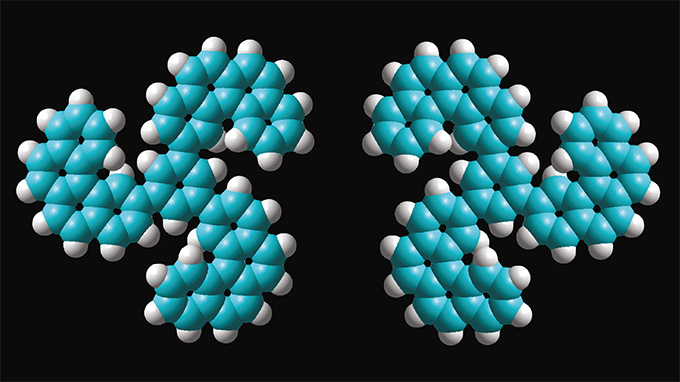For centuries, mathematicians and floor stylists are alike have been fascinated by forms that can plague a plane – in particular, that do so without repetition.
Now, a team of chemists has described a molecule that naturally accumulates in these irregular models, laying the groundwork for engineering materials that behave differently than regular solids.
“When these things seem to be born spontaneously in nature, I think it’s absolutely interesting,” says Craig Kaplan, a Mathematician and Computer Scientist at the University of Waterloo in Canada who was not involved in the study. “It feels like you found a glitch in the matrix.”
In 2018, chemist Karl-Heinz Ernst and colleagues were spraying a special hydrocarbon molecule on a silver substrate and seeing it forms patterns through a microscope.
“We saw something that was quite startling and amazing,” says Ernst, from the Swiss federal laboratories on Dübendorf’s material science and technology. The deposited molecules formed coils with three weapons, which were grouped together into triangles of slightly different sizes. In each of the 100 experiments, the researchers found new triangular sequences that never seemed to repeat. They sat in these images for years trying to understand them.

Then, in 2023, Kaplan and co-workers amazed the world of mathematics when they found Einstein’s elusive plate-a single shape that can only fill a floor with a repeated pattern, which means it is aperiodic. Mathematical discovery helped Ernst and colleagues joined the parts: it seemed to be prevented in a kind of molecular Einstein.
Kaplan warns that the patterns in this material are not aperiodic in the same sense as the Einstein tile. The parts do not fit exactly, and is unlikely – if not impossible – that they can tile only with non -repeated models. But even without achieving true aperiodicity, the modeling of the novel can be enough to give the material some seemingly magical properties, says Kaplan.
Physicists have known for decades that electrons behave differently in Quasicrystals, materials, atomic structures of which exhibits some large -scale order, but lacks repeated models. Last year, physicist Felix Ficker at the University of Bristol in England helped build a computer simulation of a Quasicrystal based on Einstein of Kaplan, who predicted to act as a cheated graph leaf.
How the quasicrystals in nature are formed remains a great mystery, says Ficker. The Ernst spirals rose can provide some data.
The key to the irregular behavior of this molecule, reported in January 2025 in The communications of natureIt can be the entropy of its constellations.
Entropy is a measure of how disordered a material is, or otherwise, how statistically possible it is its atomic adjustment. The molecule has two frauds that make it abnormally versatile: it can be easily transformed between two distinct forms of the mirror image, and forms very weak intermolecular connections, allowing it to pass between large -scale large -scale configurations. These two properties together means that there are many possible ways for the molecules to regulate without repeating it, says Ernst. The molecules thus accumulate in higher entropy models, not repeated-ordering in the most irregular way possible.
Flicker says the new study offers a “really beautiful” theory of this “order with disorder” of quasicrystal formation. Understanding general principles of irregular order can direct scientists towards the best ways to engineering Quasicrystals on request. unexpected.
Ernst is humbled by the fact that the molecules found these models all themselves. “This is the nature that makes mathematics,” he says.
#Tile #Einstein #shocked #mathematics #Tap #molecular #cousin
Image Source : www.sciencenews.org